A few bike cleaning tips.
One of the more mundane things I’ve has to do lots of with ProBikeHire.com is cleaning bikes, so I thought I’d share a few secrets on how to clean your bike fast -and more importantly- on the cheap. [Read more →]
One of the more mundane things I’ve has to do lots of with ProBikeHire.com is cleaning bikes, so I thought I’d share a few secrets on how to clean your bike fast -and more importantly- on the cheap. [Read more →]
 Do you notice the terminology «global warming» is somewhat detached from the humanity that caused it? As if it were the planet’s response to our domination, but not directly our own fault.
Do you notice the terminology «global warming» is somewhat detached from the humanity that caused it? As if it were the planet’s response to our domination, but not directly our own fault.
Deforestation today proceeds at 55,630 to 120,000 square kilometres each year. At this rate, all tropical forests may be gone by the year 2090.
I think the real reason why some people continue to deny global warming is taking place (subconsciously or not) is that they can’t deal with reality. So if they convince themselves that it would’ve happened anyway, they can simply carry on life as normal, and not have to worry about it.
For me, the notion that this is all some part of a repetitive ‘prehistoric cycle’ which man has nothing to do with is preposterous. It just happens at the same time man enters the industrial age, and is happening 10x quicker than anything before. Hello! coincidence!! The words RATE OF CHANGE have very strong meaning in the scientific community. Grand geological transformations don’t just happen over a matter of years or even decades. They are supposed to take millenia, or longer. So now that the average global sea & air temperature has risen a degree already, I think we’re already in deep shit my friends. [Read more →]
 In this short article, I’ve estimated the amount of Carbon dioxide emissions from the maufacture of a standard aluminium bicycle frame weighing 1 kg. This is in an attempt to answer the question: «how far would I have to cycle [as opposed to driving a car] to offset the manufacture of my alloy bike frame?»
In this short article, I’ve estimated the amount of Carbon dioxide emissions from the maufacture of a standard aluminium bicycle frame weighing 1 kg. This is in an attempt to answer the question: «how far would I have to cycle [as opposed to driving a car] to offset the manufacture of my alloy bike frame?»
Alcan Aluminium states in one of their reports that:
14.9kW/hr per kg of aluminium produced.
6.8 tonnes of CO2 per tonne of Al.
1.8 tonnes of perfluorocarbons per tonne of Al.
= 6.8kg of CO2 per kg of Al.
~ 3786 litres of CO2 gas produced for a one-kilogram bicycle frame.
I have previously calculated that 1L of petrol produces 2.28kg of CO2, therefore 3L of petrol yields 6.8kg of CO2. A typical small car consumes 6L/100km. So you would only have to cycle 50km or so instead of driving a car, and you’ve already «offset» your frame.
So I would say that the humble bicycle is probably the only thing that I can think of that benefits the environment, if only because it’s more energy efficient than walking. I’ll save that calculation for another day…
I ran across your column in my quest to find out more about bicycle frame materials (aluminum, steel, titanium, carbon fiber) on a molecular level. I am a 7th grade teacher and i am putting together a unit about the Science of Cycling. I want my students to understand why these different materials have the properties they do on a molecular level. Why is titanium so strong? Is it that all of the particles are so clumped together? I dont know if that makes complete sense but i am trying to grasp why these materials have these certain characteristics and if we looked at a particle level, what would it look like?
Can you help me??
Thanks!
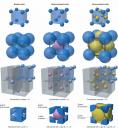 Metallic Atomic Structure:
Metallic Atomic Structure:
All metals have a crystalline structure made up of «close packed» atoms. The atomic nuclei are in fixed positions while the electrons can migrate. This gives metals their ability to conduct heat and electricity well. The crystal arrangements are better represented by spheres in what’s called a unit cell. There are three main types of packing in the transition metals: Face-Centred Cubic (FCC), Body-Centred Cubic (BCC) and Hexagonal Close Packed (HCP). The packing densities of BCC, FCC and HCP structures are 68, 74 and 74% respectively. The size of the nuclei vary according to the type of element.
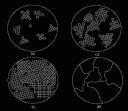 Metallic Microstructure:
Metallic Microstructure:
The atoms in a metallic solid are arranged in close packed crystalline arrangements. However, during solidifaction of a molten metal, different regions are forced to crystallise at the same time. This gives rise to various «grains». Within each grain, the atoms are arranged regularly; it is the spatial orientation of this ordered array that differs between these grains. The sizes of grains normally vary from microns to inches. Grains can be seen with the naked eye in galvanized metal sheet (zinc plated steel), but they are usually microscopic. Generally speaking, the faster the cooling process, the smaller the grain size. Grains are also highly dependent on the forming processes involved in manufacturing a metal. A smaller grain size increases strength on the premise that it is difficult for dislocations to cross grain boundaries. [Read more →]
 In the section labelled «Vida Enigmatica», I talk about all aspects of life in general. I attempt to tackle all of the tough questions about societies and civilisation. But it’s recently occured to me that I haven’t discussed life itself. One of the most difficult questions to answer are «what is life?» and «what is the purpose of life?».
In the section labelled «Vida Enigmatica», I talk about all aspects of life in general. I attempt to tackle all of the tough questions about societies and civilisation. But it’s recently occured to me that I haven’t discussed life itself. One of the most difficult questions to answer are «what is life?» and «what is the purpose of life?».
I suppose that before we can effectively answer why is life here and what is it’s purpose, we’d better be sure about what life actually is. How can we possibly answer what the purpose of life is if we don’t even know what separates us from the non-living? The trouble is that whenever we attempt to answer what consitutes life, we arrive at all sorts of vague definitions of what life is, for example:
«the quality that distinguishes a vital and functional being from a dead body»
«a principle or force that is considered to underlie the distinctive quality of animate beings»
«an organismic state characterized by capacity for metabolism, growth, reaction to stimuli, and reproduction»
«the condition that distinguishes organisms from inorganic objects and dead organisms, being manifested by growth through metabolism, reproduction, and the power of adaptation to environment through changes originating internally.»
«the sum of the distinguishing phenomena of organisms, esp. metabolism, growth, reproduction, and adaptation to environment.»
There are many definitions of what consitutes «life», but for every one of these sub-classifications, there are exceptions:
Adaptation to the environment. At what rate must life adapt for it to be considered alive? If we rapidly create an artificially toxic environment, no life form will be able to adapt in time and hence it will die. The same can be said for the «reaction to stimuli» argument. The entire Plant Kingdom is at a great disadvantage here – although they can adapt relatively quickly to their environment, plants can only react to stimuli very slowly. Viruses do not appear to react to anything. In fact, I suspect that «adaptation to the environment» and «reaction to external stimuli» are really disguised as the same thing, albeit at different rates of application. [Read more →]
 Is Attention Deficit Hyperactivity Disorder (ADHD) simply an extreme degree of hyperactivity, brought about by many complex contributing factors? We’re stimulated (visually) by television and seemingly limitless internet possibilities. Outwardly, we appear to have adapted in various ways to this fast pace of life. But what happens to our brain when we stop all this fast-paced internet work and shutdown our computers and gaming consoles? Our brain continues to run wild at this high pace. Our minds continue to race overtime; not accustomed to stagnating, we dwell & obsess over the tiniest of problems merely for «something to do». Is this something we have control over?
Is Attention Deficit Hyperactivity Disorder (ADHD) simply an extreme degree of hyperactivity, brought about by many complex contributing factors? We’re stimulated (visually) by television and seemingly limitless internet possibilities. Outwardly, we appear to have adapted in various ways to this fast pace of life. But what happens to our brain when we stop all this fast-paced internet work and shutdown our computers and gaming consoles? Our brain continues to run wild at this high pace. Our minds continue to race overtime; not accustomed to stagnating, we dwell & obsess over the tiniest of problems merely for «something to do». Is this something we have control over?
 Could a lack of excerise combined with overchoice & overstimulation actually compound certain mental disorders in the early phase of development? In an ever-increasingly stressful world, we’ve simultaneously reduced the amount of excercise we receive! We drive everywhere, use mobile devices, remote controls, pre-packaged «lazy foods», etc. Although most of us still continue to defer exercise. This is a recipe for disaster. Could this be a simple link to many of today’s current mental disorders? [Read more →]
Could a lack of excerise combined with overchoice & overstimulation actually compound certain mental disorders in the early phase of development? In an ever-increasingly stressful world, we’ve simultaneously reduced the amount of excercise we receive! We drive everywhere, use mobile devices, remote controls, pre-packaged «lazy foods», etc. Although most of us still continue to defer exercise. This is a recipe for disaster. Could this be a simple link to many of today’s current mental disorders? [Read more →]
 As a former postgraduate research scientist, science is one subject I’m qualified to reflect upon. I completed my Doctorate in 2005. The way I look at it, current research science is a system of reliable information harnessing, data processing, followed by speculative interpretation based on well-founded principles & intense scrutiny by fellow peers. It is a method of education for an entire community of very eager-to-learn people. [Read more →]
As a former postgraduate research scientist, science is one subject I’m qualified to reflect upon. I completed my Doctorate in 2005. The way I look at it, current research science is a system of reliable information harnessing, data processing, followed by speculative interpretation based on well-founded principles & intense scrutiny by fellow peers. It is a method of education for an entire community of very eager-to-learn people. [Read more →]
 The phrase «quantum leap» is most often used by people who know sod all about quantum mechanics. Usually what they mean to say is that whatever they’re talking about provides a huge step forward. If they knew anything, they would know that quantum mechanics is the study of subatomic particle interactions.
The phrase «quantum leap» is most often used by people who know sod all about quantum mechanics. Usually what they mean to say is that whatever they’re talking about provides a huge step forward. If they knew anything, they would know that quantum mechanics is the study of subatomic particle interactions.
By its own definition, a quantum leap is a miniscule jump. The classic example is a single atom; when it absorbs a certain amount of energy, an electron orbiting the nucleus instantly jumps from a low energy state to a higher energy state. An excited electron can also fall back to a lower energy state while spontaneously emitting a photon in the process. These are said to be quantum leaps as they involve discreet, discontinuous energy levels. Ironically, I first heard the phrase «quantum leap» being used by an ignorant science tv show presenter.
In physics, a quantum leap or quantum jump is a change of an electron from one energy state to another within an atom….. In real physical systems a quantum leap is not necessarily a large change, and can in fact be very insignificant….. In the popular sense, the term is usually applied to mean a large or significant change, which is thus not strictly correct.
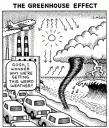 Petrol is a mixture of several different organic carbon compounds. The most common molecules in petrol are the alkanes, consisting of straight or branched carbon chains with between 5-8 carbon atoms saturated with hydrogen molecules (pentane, hexane, heptane and octane).
Petrol is a mixture of several different organic carbon compounds. The most common molecules in petrol are the alkanes, consisting of straight or branched carbon chains with between 5-8 carbon atoms saturated with hydrogen molecules (pentane, hexane, heptane and octane).
This is the chemical formula for the complete combustion of octane:
2 C8H18 + 25 O2 = 18 H2O + 16 CO2
As you can see from this simple equation, for every single octane molecule that is burned, 8 molecules of CO2 are produced. The standard unit measure of compounds is the mole. 1 mole of octane weighs 114 grams and contains avogadro’s number of molecules, 6.023 x 1023. 1 mole of CO2gas weighs 44 grams, but takes up much more volume. It’s important to remember from the ideal gas law that at standard laboratory conditions (25°C and 1 atmosphere pressure) one mole of gas at occupies 24.5 litres. One litre of petrol contains ~737.22 grams of liquid (or ~6.47 moles). Therefore, when one litre of petrol is burned, 2.28kg of CO2 are produced, equivalent to 1268 litres of of CO2 gas!! Every single 50 litre tank full of petrol will produce over 63,400 litres of CO2 gas (63.4 m3), or a volume equivalent to an imaginary cube with sides 4 metres long.
I find it interesting that people talk in terms of kilograms of CO2 because it really underestimates the quantity of gas we’re dealing with. Gases weigh hardly anything! In fact, 1kg of CO2 equals 557 litres! Why don’t we learn to quote the data figures of CO2 in litres instead? How much petrol must be burned to get 1kg of CO2 gas? The answer is that only 324 grams of petrol will yield 1 kg of CO2. [Read more →]
syn·chro·nic·i·ty (s ng
ng kr
kr -n
-n s
s
 -t
-t , s
, s n
n -)
-)
n. pl. syn·chro·nic·i·ties
Synchronicity is the experience of two or more events which occur in a meaningful manner, but which are casually unrelated. Synchronous events, unlike coincidences, are related to one another conceptually, and happen far more frequently than is allowed by random chance.
The concept of Synchronicity:
The idea of synchronicity is that the conceptual relationship of minds, defined by the relationship between ideas, is intricately structured in its own logical way and gives rise to relationships which have nothing to do with cause-and-effect. Synchronous events reveal an underlying pattern, a conceptual framework which encompasses, but is larger than, any of the systems which display the synchronicity. The suggestion of a larger framework is essential in order to satisfy the definition of synchronicity as originally developed by Swiss psychologist Carl Jung.
Carl Jung coined the word to describe what he called «temporally coincident occurrences of acausal events.» Jung variously described synchronicity as an «‘acausal connecting principle'» (i.e. a pattern of connection that cannot be explained by direct causality), «meaningful coincidence» and «acausal parallelism». Jung introduced the concept in his 1952 paper «Synchronicity €” An Acausal Connecting Principle», though he had been considering the concept for almost thirty years.
For me, these definitions don’t actually mean a damn thing. Here’s one example of synchronicity: you happen to be browsing my blog or forum, and you notice that a lot of the posts are made by a person who calls himself ‘synchronicity’. You then go into google and type «what is synchronicity», this page appears and you’re lead straight back here again! Given access to ~1 trillion internet pages, and you come full circle in only one loop… that’s what I call synchronicity!
As far as I’m concerned, anyone who thinks that our way of life doesn’t affect the environment (climate included) is an idiot. Sorry, but some people still continue believe that we can spew as much CO2 into the air as we want and it will have no long-term effect on the Earth’s climate. You only need to look at exactly how much CO2 is produced by man:
Since 1751 roughly 315 billion tons of carbon have been released to the atmosphere from the consumption of fossil fuels and cement production. Half of these emissions have occurred since the mid 1970s. The 2004 global fossil-fuel CO2 emission estimate, 7910 million metric tons of carbon, represents an all-time high and a 5.4% increase from 2003.
People talk of gas emmissions in terms of mass, which understates the quantity… ![]() But exactly how much space does 1 tonne of CO2 gas occupy? You only need to look at molar volumes of gases:
But exactly how much space does 1 tonne of CO2 gas occupy? You only need to look at molar volumes of gases:
1 tonne = 1 million grams.
44g of CO2 = 1 mole = 24.5L of gas (at 25ºC and standard atmospheric pressure)
Therefore, just 1 tonne of CO2Â gas occupies 557 thousand litres. (= 22.7 kmoles or 557 m3)
Taking the figure above, annual global CO2 emmission at 7910 million metric tons (7,910,000,000), multiply that by the volume occupied by one tonne (557,000), and we come up with 4.4 THOUSAND TRILLION LITRES OF CO2 GAS PRODUCED EVERY YEAR.
We spew 4,400,000,000,000,000 litres of CO2 into the Earth’s atmosphere every single year.
We do not live in an infinite space, not in area, nor in volume. Yes, gravity sucks back all those CO2 molecules to planet earth. So I take the thickness of the atmosphere, from wikipedia:
Three quarters of the atmosphere’s mass is within 11 km of the planetary surface. 99.99997% of the atmosphere by mass is below 100Â km.
And the Earth’s total surface area from another source:
The total area of the Earth is approximately 510 million square kilometers.
My ultra quick calculation of volume of Earth’s atmosphere, up to 100km (yes let’s include all of it) = 51 trillion trillion cubic metres or 51,000 trillion trillion litres. That includes the atmosphere, the stratosphere, the troposphere, the mesosphere -yes, the entire fucking quota.
It appears some people claim that we can produce that much CO2 gas, 4.4 THOSAND TRILLION LITRES EVERY SINGLE YEAR, and it no way affects the limited volume of ‘our own’ atmosphere (51,000 trillion trillion litres)!!! That’s equivalent to an increase of 86 parts per billion CO2 gas every single year.
A few points:
Do I even need to elucidate my calculations further????? People claim that our CO2 production has no affect on our precious environment, not even cumulatively! And as an ex-research scientist, that mode of thinking enrages me. ![]()
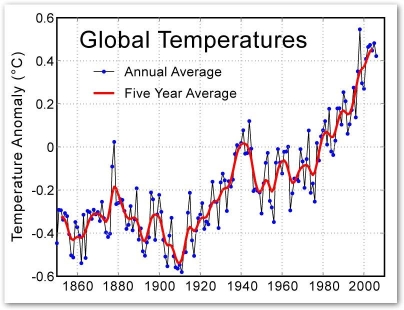


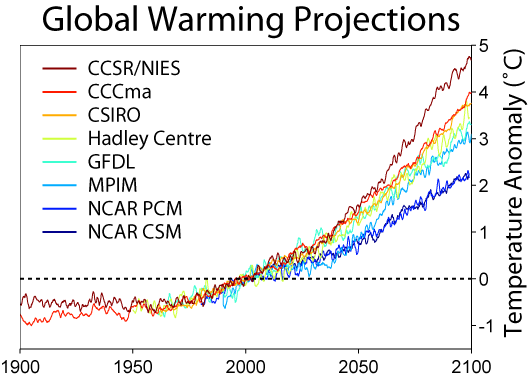
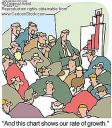 The growth of www.Tenerife-Training.net website has been astonsishing over the last 2 years:
The growth of www.Tenerife-Training.net website has been astonsishing over the last 2 years:
For the past four months, we’ve received an average of 5000+ monthly web-visits and this figure continues to climb steadily.
For Jun – Dec 2007, ~82% of people visited www.Tenerife-Training.net more than once. The average number of pages per visitor was 9.2.
We also received a record number of visits recently on the 9th of January – 437 in one day!
The latest trends show that, on average, 75% of visitors add one page to their favourites folder. To date I can estimate that there have been 17,501 instances of people adding a page to their favourites folder.
There are two possible alternatives; in this short life you can either synthesise the following chemical compounds:
limonene, myrcene, valencene, linalool, octanal, decanal, ethyl butyrate, ?-ionone, citronellal, and ?-sinensal, E-2-octenal, 1-octen-3-ol, Z-4-decenal, E, E-2,4-nonadienal, guaiacol, ?-octalactone, and m-cresol, O-glycosylated flavones, flavonols, phenolic acids, ethyl acetate, 6-C-?-glucosyldiosmin, 6,8-di-C-glucopyranosylapigenin, 6,8-di-C-?-glucosyldiosmin, 2-oxo-L-threo-hexono-1,4- lactone-2,3-enediol, beta carotene, 2-hydroxypropane-1,2,3-tricarboxylic acid, heteropolysaccharide and assimilate them by complex hydrolysis,
or
you can pluck an orange and eat it.
But although we can synthesise many many complex molecules such as these, there is currently no way we can ‘manufacture’ a wholey artifical fruit identical in every way to a naturally grown one. Even though it takes an enourmous effort to characterise these natural chemical compounds and synthesise them, and nature does it for free with soil, sunlight, air and water, we still try. Without a plant seed, or a tissue culture sample, or a DNA strand, there is no way we’ll be able to do it either. I say that with all things considered, the natural source will always be the healthier alternative…
Since this is «science simplified», I don’t think these two videos need further explanation:
Here’s an interesting science paper written by Steven N. Ward and Simon Day. Two other detailed scientific research papers concerning the La Palma landslide and subsequent generation of a megatsunami can be read here and here.
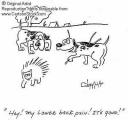 The principals of acupuncture are based on the stimulation of certain points throughout the body. These points are interconnected and are known as meridians. The organs and limbs along these meridians beneficially respond to stimulation, with a subsequent relief of pain and an improvement in the general sense of well-being. [Read more →]
The principals of acupuncture are based on the stimulation of certain points throughout the body. These points are interconnected and are known as meridians. The organs and limbs along these meridians beneficially respond to stimulation, with a subsequent relief of pain and an improvement in the general sense of well-being. [Read more →]
From my own personal experience, the state of chronic depression is a relatively slow & insidious process which begins by the inability to make major choices within a severely conflicting environment. Highly important decisions (those which affect not just yourself, but other people as well) take time to solve. But you dwell on the impact of all future negative consequences and their importance, and these types of situations cannot be solved simply or quickly. You then enter a repetitive negative thought state, constantly dwelling on the major conflicting problems so much so that you can’t even begin to make what would otherwise be very minor choices.
This leads to a complete lack of motivation to actually do anything to help yourself get out of the hole you’ve spiralled down into. It’s a classic example of what physicists term a «feedback loop». Although you may or may not be aware of it, there appears to be no means of escape -eventually- you become so entrapped by your own pessimistic thoughts that you firmly believe that any choice you make will lead to unhappiness. It’s a terrible state of self pity & guilt. So you begin to contemplate the easiest ways of easing your own suffering, which is of course where the real danger lies. It is a complete breakdown of the mind. Its impossible to snap out of, even for normally hyper-optmistic thinkers.
Almost everyone has heard of Qantas, Pepsi and IBM. They’ve saturated the world with publicity. These are household names because everyone is familiar with the business & their products. That is to say, we all know they exist, we all knows what they sell, and most importantly we all know how to reach them.
At the extreme opposite end is a hermit living in Timbuktoo. He doesn’t have much connection with the outside world (if any), hence is local network may consist of him and his dog. So in other words, It’s a question of «popularity».
Social network theory views social relationships in terms of nodes and ties. Nodes are the entities within a network, and ties are the all-important relationships or connections between them. Entities may be organisations, businesses or individuals. They say that any two people on the planet are linked to each other by only six ties, on average.
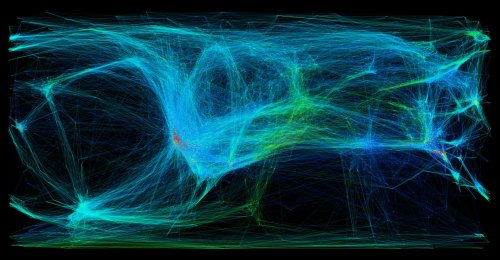
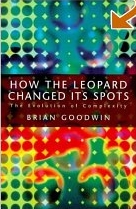
The main theme is about how DNA doesn’t need to provide information in every detail to produce an organism. Chemical, physical and mathematical forces also play a significant part in the production of an organism. The book is also about how natural selection is not the only process at work for evolutionary advancement. I totally agree with the conclusion, and he’s sure changed my thoughts on the subject, but it was a challenge to read it all because of the way it is written. It could have been more fun.
For the others that read this book and still don’t get «how the leopard changed its spots» – its a metaphor. Leopards aren’t supposed to change their spots. The leopard symbolises scientists like Richard Dawkins and others who are fixated with genetic evolution and DNA. After reading this book, will they change their ways? Its not about leopards!
It does have loads of fascinating examples, with all the relevant diagrams & figures to make the point clear, so he’s done a good job assembling all of those. From ant colonies & the BZ reaction, to evolution of the eye & fibrillation in the human heart. An example: it is the concentration of calcium that causes the single celled organism (Acetabularia) to grow to a particular shape, NOT the DNA. He also explains why a sunflower seed head forms a spiral, and it is all to do with mathematics, nothing to do with sunflower DNA. Fascinating stuff!!
The trouble with this book is that the author uses the word «dynamic» waaaay too much. It quickly becomes very annoying. He is obsessed with that word. Open the book at random, and you will see what I am talking about. Aside from that, it is very tedious to read. Instead of making the ideas easily understood, it seems Brian Goodwin goes out of his way to make it complicated.
I’d really like to give it 3.5 stars, because at the end of it I was glad I read it, but I wouldn’t necessarily recommend it to anyone, because there are better books out there (you might like to see my other reviews on popular science books). Remember that you can only read a limited number of books in your lifetime, and this one is not perfect. Buy it ONLY if you’re specifically interested in this field of science OR you’ve read all the truly good books out there and want to lower your standards a bit and still keep reading popular science!
The author has a very easy to read style. It is very succinct and eloquent. If you love nature, you will LOVE this book! The chapter «In the company of ants» is probably one of the best chapters [of any book] that I have ever read. I found the hierarchal structure of the leaf-cutter ants very intriguing. What marvellous little creatures! I’ll never look at an ant the same way again. Here’s a little snippet for you:
«Watch where you step. Be careful of little lives. Feed them crumbs of coffeecake. They also like bits of tuna and whipped cream. Get a magnifying glass. Watch them closely. And you will be as close as any person may ever come to seeing social life as it might evolve on another planet.»
I also loved three other chapters entitled, «Humanity seen from a distance», «The little things that run the world» and the final chapter, «Is humanity suicidal?». Other interesting chapters are about snakes, or rather serpents, sharks, altruism & aggression, etc. The essence of the book is really as the title suggests, «in search of nature».
Towards the end, a sincere and legitimate message is delivered by the author. It is a very moving assertion and everyone, yes everyone, should read it. Edwin O. Wilson is proof that Carl Sagan wasn’t the only good popular science author.
This book contains numerous examples of design, from an engineering perspective. The theme is on comparing the design of evolution with that of technological invention. Although the book has almost precisely a 50% natural and 50% artificial split, you get the impression that the author is slightly biased in favour of technology.
Steven Vogel acknowledges they are different: nature abhors using straight lines, engineers love them; nature has not been able to employ metals, yet they are commonly used in our constructions. Although I for one would never be critical (as this guy sometimes is) of nature by saying that it never utilises metals or whatever. It doesn’t need to – it simply isn’t required. To favour an I-beam over a tree limb is foolish and misguided. Is a piece of metal or lump of concrete alive? Certainly not. The astonishing feature of nature is that it manages to evolve these things, that are inherently living entities, which can grow and replicate themselves with no awareness or foresight!
So the trouble with this book is that it doesn’t address the fact that a tree does way more than just support itself: a tree is not merely a vertical structure; it is an extremely complex photosynthesis machine. [Read more →]